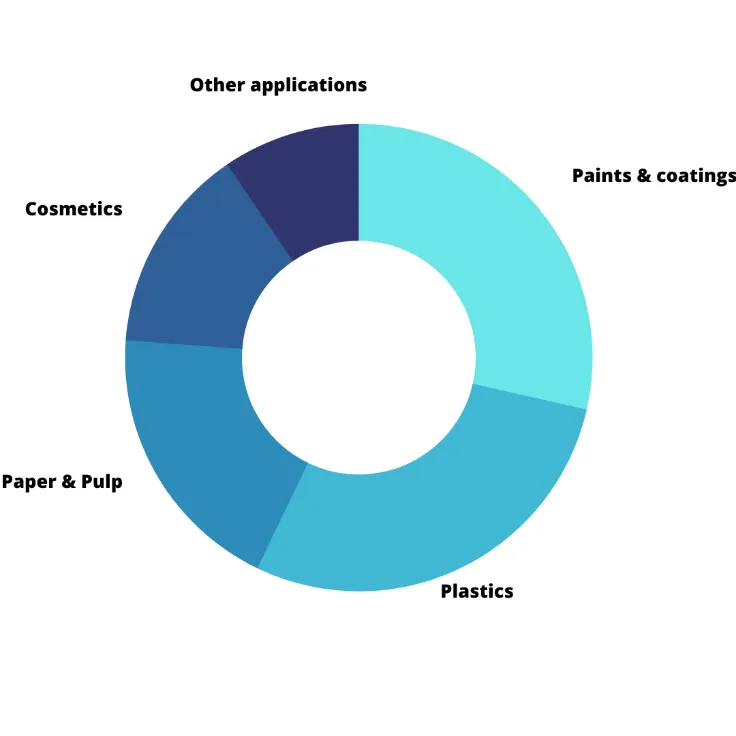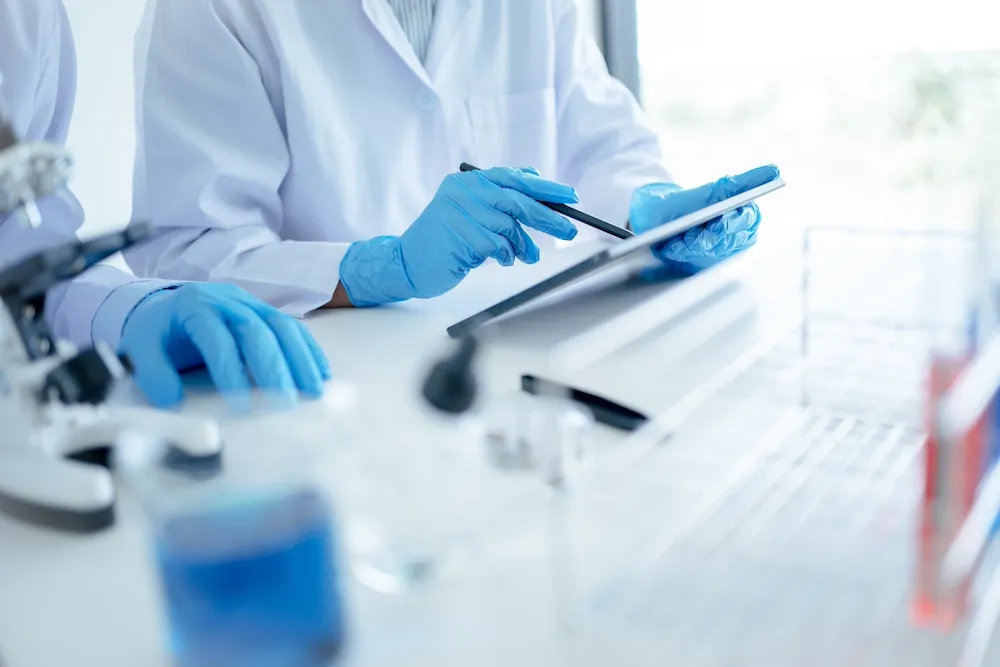
The EU Court's decision on titanium dioxide
In 2020, the European Commission (EC) classified titanium dioxide (TiO2) (CAS n°13463-67-7) as a category 2 carcinogen (ATP -Adaptation to Technical Progress- amendment modifying the CLH -Harmonised Classification and Labeling- table of the CLP -Classification Labeling Packaging- regulation). This decision has been subject to numerous challenges, particularly by German coating and printing ink companies such as CWS Powder Coatings, Brillux, and Daw SE.
On the 23rd of November, 2022, following several hearings before the Court of Justice of the European Union (CJEU), the European Court of Justice (ECJ) axed the regulation adopted by the European Commission concerning the harmonized classification of titanium dioxide. This decision was based on two legal arguments.
First, the scientific evidence on which the European Commission relied was deemed unreliable by the ECJ. According to the court's decision, "the classification of a substance as a carcinogen can only refer to a substance which is intrinsically capable of causing cancer." In this case, the available evidence suggests that the substance is carcinogenic only in its powder form, thereby falling short of the criterion as defined in the ECJ's decision.
Titanium Dioxide's former classification as a category 2 carcinogen by inhalation created an obligation to inform, through labeling, about the potential risks to handlers of the substance. Annulation of this status would mean nullification of this obligation.
An important caveat that companies should still consider, however, is that the Commission has been given until February 2023 for appealing the ECJ's decision before the CJEU. In the meantime, the Court of First Instance has advised that the European Commission fill the legal gap created by the classification's annulment within 2.5 months.
The Regulatory History of Titanium Dioxide
For decades, there have been many concerns about the inhalation risks of small insoluble particles. It was only until 2006 that the classification of titanium dioxide was discussed when the IARC (International Agency for Research on Cancer) classified it as "probably carcinogenic to humans".
Then, 1 year later, 3500 companies have pre-registered titanium dioxide, with the entry into force of the REACH regulation (Registration, Evaluation, Authorization and Restriction of Chemicals).
In 2017, the Risk Assessment Committee (RAC) of the European Chemical Agency (ECHA) has issued an opinion on the classification of titanium dioxide as a category 2 carcinogen, with the hazard statement "H351 (inhalation)".
On the basis of this opinion, the European Commission concluded, in 2020, that titanium dioxide was suspected of being "carcinogenic to humans by inhalation in the form of a powder containing 1% or more of particles with a diameter of 10 micrometers or less". As a result, the EC proceeded to adopt Regulation 2020/217 (amending Regulation (EC) No 1272/2008 on classification, labeling and packaging of substances and mixtures), adding titanium dioxide to the CLH Regulation on harmonized classification and labeling.
Since its adoption, manufacturers, importers, downstream users, and suppliers of titanium dioxide have protested this decision to the European Union (EU) Tribunal, pleading for its annulment. The EC's classification of Titanium Dioxide, however, had the support of the European Chemical Agency (ECHA), the EU Parliament, the EU Council, as well as that of 5 EU Member States (Denmark, Sweden, France, Netherlands, Slovenia).
The place of titanium dioxide on the market
Titanium dioxide (TiO2), an inorganic chemical substance, is the 9th most abundant chemical element on Earth, beating out hydrogen for the spot.
On the world market today, TiO2 occupies a very important place. Known for its rare properties of whiteness, opacity, brightness, and the durability of its color, it is used in its pigment form as paint, ink, coating, and plastic. This substance, with its coloring and covering properties, is used in the cosmetics, textile, pharmaceutical and rubber industries.

Titanium dioxide was also used in food as a food additive (E171). However, this use was banned in France in 2020, then in the EU in 2023 because of its potential genotoxicity and alleged carcinogenic properties.
Regulatory support
One way to follow the regulatory evolutions concerning titanium dioxide and other substances is through EcoMundo's MAT Factory software. This solution optimizes and automates your international regulatory watch.
For managing generating Safety Data Sheets that comply with the latest CLP requirements, EcoMundo also offers SDS Factory, which allows you to quickly generate region-specific SDSs.
France challenges the Tribunal's decision
Updated 03/03/2023
On February 8, 2023, the French government appealed to the Court of Justice to review the Tribunal's decision. This disagreement may result in lengthy legal proceedings of up to 10 years. In the meantime, the judgment of the Court of First Instance has been suspended by this challenge. Thus, the regulation on the harmonized classification and labelling of titanium dioxide continues to apply until a new decision is made.
Want to know more about titanium dioxide?
For more information, contact our experts.
The EU Court's decision on titanium dioxide
In 2020, the European Commission (EC) classified titanium dioxide (TiO2) (CAS n°13463-67-7) as a category 2 carcinogen (ATP -Adaptation to Technical Progress- amendment modifying the CLH -Harmonised Classification and Labeling- table of the CLP -Classification Labeling Packaging- regulation). This decision has been subject to numerous challenges, particularly by German coating and printing ink companies such as CWS Powder Coatings, Brillux, and Daw SE.
On the 23rd of November, 2022, following several hearings before the Court of Justice of the European Union (CJEU), the European Court of Justice (ECJ) axed the regulation adopted by the European Commission concerning the harmonized classification of titanium dioxide. This decision was based on two legal arguments.
First, the scientific evidence on which the European Commission relied was deemed unreliable by the ECJ. According to the court's decision, "the classification of a substance as a carcinogen can only refer to a substance which is intrinsically capable of causing cancer." In this case, the available evidence suggests that the substance is carcinogenic only in its powder form, thereby falling short of the criterion as defined in the ECJ's decision.
Titanium Dioxide's former classification as a category 2 carcinogen by inhalation created an obligation to inform, through labeling, about the potential risks to handlers of the substance. Annulation of this status would mean nullification of this obligation.
An important caveat that companies should still consider, however, is that the Commission has been given until February 2023 for appealing the ECJ's decision before the CJEU. In the meantime, the Court of First Instance has advised that the European Commission fill the legal gap created by the classification's annulment within 2.5 months.
The Regulatory History of Titanium Dioxide
For decades, there have been many concerns about the inhalation risks of small insoluble particles. It was only until 2006 that the classification of titanium dioxide was discussed when the IARC (International Agency for Research on Cancer) classified it as "probably carcinogenic to humans".
Then, 1 year later, 3500 companies have pre-registered titanium dioxide, with the entry into force of the REACH regulation (Registration, Evaluation, Authorization and Restriction of Chemicals).
In 2017, the Risk Assessment Committee (RAC) of the European Chemical Agency (ECHA) has issued an opinion on the classification of titanium dioxide as a category 2 carcinogen, with the hazard statement "H351 (inhalation)".
On the basis of this opinion, the European Commission concluded, in 2020, that titanium dioxide was suspected of being "carcinogenic to humans by inhalation in the form of a powder containing 1% or more of particles with a diameter of 10 micrometers or less". As a result, the EC proceeded to adopt Regulation 2020/217 (amending Regulation (EC) No 1272/2008 on classification, labeling and packaging of substances and mixtures), adding titanium dioxide to the CLH Regulation on harmonized classification and labeling.
Since its adoption, manufacturers, importers, downstream users, and suppliers of titanium dioxide have protested this decision to the European Union (EU) Tribunal, pleading for its annulment. The EC's classification of Titanium Dioxide, however, had the support of the European Chemical Agency (ECHA), the EU Parliament, the EU Council, as well as that of 5 EU Member States (Denmark, Sweden, France, Netherlands, Slovenia).
The place of titanium dioxide on the market
Titanium dioxide (TiO2), an inorganic chemical substance, is the 9th most abundant chemical element on Earth, beating out hydrogen for the spot.
On the world market today, TiO2 occupies a very important place. Known for its rare properties of whiteness, opacity, brightness, and the durability of its color, it is used in its pigment form as paint, ink, coating, and plastic. This substance, with its coloring and covering properties, is used in the cosmetics, textile, pharmaceutical and rubber industries.

Titanium dioxide was also used in food as a food additive (E171). However, this use was banned in France in 2020, then in the EU in 2023 because of its potential genotoxicity and alleged carcinogenic properties.
Regulatory support
One way to follow the regulatory evolutions concerning titanium dioxide and other substances is through EcoMundo's MAT Factory software. This solution optimizes and automates your international regulatory watch.
For managing generating Safety Data Sheets that comply with the latest CLP requirements, EcoMundo also offers SDS Factory, which allows you to quickly generate region-specific SDSs.
France challenges the Tribunal's decision
Updated 03/03/2023
On February 8, 2023, the French government appealed to the Court of Justice to review the Tribunal's decision. This disagreement may result in lengthy legal proceedings of up to 10 years. In the meantime, the judgment of the Court of First Instance has been suspended by this challenge. Thus, the regulation on the harmonized classification and labelling of titanium dioxide continues to apply until a new decision is made.
Want to know more about titanium dioxide?
For more information, contact our experts.







